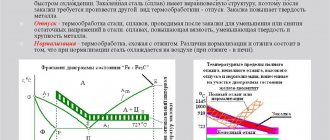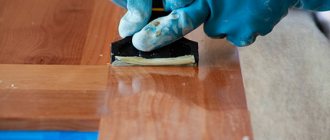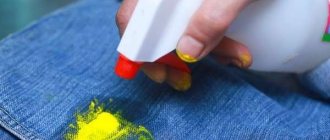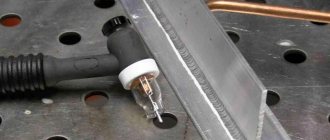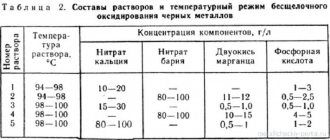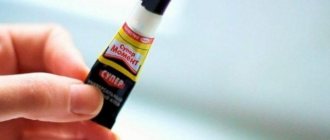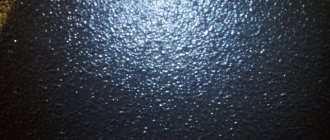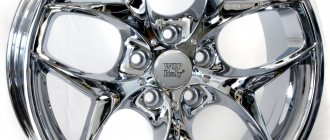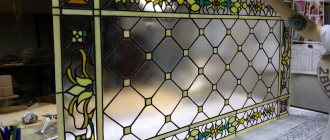Bronze watches are in great demand. This is largely due to the ability of bronze to become covered with a unique patina , acquiring a noble appearance characteristic of antique products. From a chemical point of view, patina is an oxide film that forms when reactive metals come into contact with anions (such as oxygen and chloride ions). The process of natural patination occurs slowly, but like most chemical reactions, the formation of patina can be accelerated by increasing the concentration of reagents, introducing catalysts and increasing the temperature. In this article, we'll look at some ways to artificially create (and remove) patina at home, using the Bell & Ross Diver Bronze BR 03-92 square diver as an example. A review article on this model can be read on our website.
Before you start experimenting, you need to understand what copper, brass and bronze are. Copper is a metal element, and brass and bronze are metal alloys based on it. Brass is an alloy of copper and zinc. Bronze is an alloy of copper and tin. Due to the different composition of these alloys, the patina formed on them also differs in appearance.
Cleansers
After several weeks of wear, a bronze watch will develop a natural yellow-brown patina. It will not be possible to wash it with soap and water, since oxides react with acids, and soap has a neutral or slightly alkaline composition.
Lemon juice
It is now obvious why lemon juice is considered the most popular bronze cleaner. It contains citric acid and has a pleasant smell. To remove the patina, as shown in the photo below, it took 30 minutes of soaking the watch in lemon juice (diluted with half and half water). The surface of the bronze was not only completely cleaned, but also acquired an attractive pink tint.
Patination with lemon juice
Cleaned bronze on the right side of the watch
Black coffee
Few people know, but coffee is an “acidic” product that can stain almost everything, from kitchen countertops to tooth enamel. However, in the case of bronze, coloring does not occur. On the contrary, cold (hot could damage the watch) black coffee has a cleansing effect. Pictured: The right side of the watch after the coffee bath shows a clean orange-pink bronze.
The right side of the watch is exposed to a coffee bath (1 hour)
The right side of the watch after coffee cleaning
Comparison: before and after cleansing with black coffee
Vinegar
Another common household acid is acetic acid, found in any vinegar: apple cider vinegar, rice vinegar, white vinegar, etc. Compared to lemon juice and coffee, cleaning with vinegar is much faster. The end result that other products take an hour to achieve is achieved in less than a minute with vinegar, allowing you to visually observe the color change.
The watch is soaked in vinegar liquid for less than one minute
The clock is completely cleaned!
Visual results of pattinating copper, brass and nickel silver
Pattinating and oxidation
Change in color of metals in an aqueous solution of liver sulfur
Change in color of metals in ammonia vapor
Artificial patination
Next, we will test in practice and demonstrate the results of popular bronze patination recipes on the Internet, and also, out of curiosity, we will try something new. Some of these methods give the bronze a subtle, subtle patina, while others, more aggressive, produce distinct brown or green tones. After evaluating the results, you can achieve the desired look of your bronze watch without having to do all the experiments yourself, through trial and error.
Baking soda with vinegar
Baking soda and vinegar is a method that is used in households, such as cleaning plumbing fixtures. Such substances individually have excellent cleansing properties, but when they come into contact, a powerful “fizzy” reaction occurs, releasing carbon dioxide, which decomposes into water, salt and carbon dioxide. During this process, carbon dioxide can dissolve even significant contaminants. We tried to use the resulting solution as a cleaning agent. However, instead of cleaning, the bronze suddenly darkened.
The watch is placed in the sediment solution from the reaction of baking soda with vinegar
The result is a dark patina.
With the addition of vinegar, the cleaning properties of the solution improved, but for some unknown reason this showed up mainly on the bezel.
After adding more vinegar to the solution
Close-up: Patina has not been removed from the sides of the bezel and case
Boiled egg
This is probably the most famous way to patina bronze. You need to hard boil a chicken egg, cool it a little warmer than room temperature, peel it and crush it into small pieces, and then put it in a plastic bag next to the watch (the watch should not come into contact with the egg). The interaction of hydrogen sulfide released by a boiled egg with copper, an integral part of the bronze alloy, leads to the formation of copper sulfide, a black substance.
After 15 minutes, the bronze develops a light layer similar to the natural patina after two weeks of wearing the watch. After another hour, the patina turns dark brown.
A watch and a boiled egg are placed in a plastic bag
After 15 minutes of exposure
In detail: after 15 minutes of exposure
After 1 hour of exposure
In detail: after 1 hour of exposure
Vinegar
No, you heard right. As mentioned above, vinegar is an effective cleaning agent for removing patina. The trick is that vinegar can also be an accelerator if you expose the watch to its vapor rather than the liquid itself. It's all about oxygen, without which oxidation is impossible. That is why vinegar liquid cleanses, and vinegar vapors, mixing with air, on the contrary, accelerate the formation of patina.
Place the watch in a plate or glass on some kind of stand, and pour a little vinegar liquid into the bottom of the container. Vinegar gives off a not very pleasant pungent odor, so it is better to close the container. The result is the iconic green patina. The copper component of the alloy interacts with water, oxygen, carbon dioxide and hydrogen ions in often unpredictable ways, forming various shades of green and blue.
Beginning of the experiment: the clock is set with the dial up
30 minutes later a yellowish tint appears on the watch case
Green deposits have formed on the back of the case
Continuation of the experiment: the watch is turned upside down, and a little vinegar is added to the container
An hour later
The deposits revealed a previously undetectable fingerprint
Features of heat treatment of aluminum alloys
Aluminum and its alloys require a special approach to heat treatment to achieve a certain strength and structure of the material. Several heat treatment methods are often used. Typically, aging follows after hardening. But some types of materials can be aged without hardening.
This opportunity appears after casting, when the components, at an increased cooling rate, can give the metal the necessary structure and strength. This occurs during casting at a temperature of about 180 degrees. At this temperature, the level of strength and hardness increases, and the degree of ductility decreases.
Each heat treatment method has some features that should be taken into account when processing aluminum products.
Annealing is necessary to impart a uniform structure to the aluminum alloy. Using this method, the composition becomes more homogeneous, the diffusion process is activated and the size of the base particles is equalized. It is also possible to achieve a reduction in the voltage of the crystal lattice. The processing temperature is selected individually, based on the characteristics of the alloy, the required final characteristics and the structure of the material.
Composition and properties of aluminum alloys strengthened by heat treatment
An important step in annealing is cooling, which can be done in several ways. Cooling is usually carried out in an oven or in the open air. Step-by-step combined cooling is also used, first in an oven and then in air.
The characteristics of the finished material directly depend on the rate of temperature decrease. Rapid cooling promotes the formation of supersaturation of the solid solution, and slow cooling promotes a significant level of decomposition of the solid solution.
Quenching is required to strengthen the material by supersaturating the solid solution. This method is based on heating products to temperatures and rapid cooling. This contributes to the complete dissolution of the constituent elements in aluminum. Used for processing wrought aluminum alloys.
To use this method, you need to correctly calculate the processing temperature. The higher the degree, the less time is required for hardening. In this case, it is worth choosing the temperature so that it exceeds the value required for the solubility of the components, but is less than the limit of the metal melt.
The aging method increases the strength of the aluminum alloy. Moreover, it is not necessary to subject the products to artificial aging, since the process of natural aging is possible.
Depending on the type of aging, the rate of structural changes changes. Therefore, artificial aging is more preferable, as it improves productivity. The selection of processing temperature and time depends on the properties of the material and the characteristics of the alloying components.
The right combination of heating level and holding time can increase strength and ductility. This process is called stabilization.
Annealing methods for aluminum sheets
Annealing of aluminum alloys is not mandatory. But in some cases, without this heat treatment method it is impossible to achieve the desired characteristics of the material.
The reason for the use of annealing may be the special state of the alloy, which can be expressed in a decrease in the ductility of the material.
The use of annealing is recommended when observing three types of conditions:
- The non-equilibrium state characteristic of cast products is associated with the difference in temperature conditions. The cooling rate of cast products significantly exceeds the recommended one, at which the effect of equilibrium crystallization is achieved.
- Plastic deformation. This condition may be caused by technological requirements for the characteristics and shape of the finished product.
- Heterogeneous structure of the material caused by other heat treatment methods, including hardening and aging. In this case, one of the alloying components separates into the intermetallic phase, accompanied by supersaturation of the components.
The above problems can be eliminated by annealing. Normalization of the structure and condition of the aluminum alloy is accompanied by an increase in ductility. Depending on the type of nonequilibrium state, various annealing methods are selected.
Today there are three annealing modes:
- Homogenization. Designed for processing cast ingots. During the heat treatment of ingots at high temperatures, a uniform structure is achieved. This simplifies the rental process while reducing production costs. In some cases it can be used to improve the quality of deformed products. The annealing temperature is maintained within 500 degrees, followed by holding. Cooling can be done in several ways.
- Recrystallization. Used to restore deformed parts. This requires pre-treatment with a press. The annealing temperature varies in the range from 350 to 500 degrees. The holding time does not exceed 2 hours. The speed and method of cooling has no special limits.
- Heterogenization. Additional annealing after other heat treatment methods. This method is necessary for softening aluminum alloys. This processing method makes it possible to reduce the degree of strength while simultaneously increasing the level of ductility. Annealing is carried out at approximately 400 degrees Celsius. Exposure is usually 1-2 hours. This type of annealing significantly improves the performance characteristics of the metal and increases the degree of corrosion resistance.
Cold technology
To anodize aluminum you need:
- power supply 12 V (battery, stabilizer);
- aluminum wires;
- rheostat;
- ammeter;
- containers for solutions.
Cold technology is different in that the growth of the anodized coating on the metal side proceeds at a faster rate than its dissolution on the outside.
First, the preparatory work described above is carried out. Then the parts need to be secured. It should not be forgotten that a film does not form under the fastening element. And suspended workpieces, when lowered into the container, should not touch the walls and bottom.
The anode is connected to the parts from the power source, and the cathode is connected to the capacitance. The current density is selected within the range of 1.6-4 A/dm2. Recommended values 2-2.2 A/dm2. At small values, the process will proceed more slowly, and at large values, a breakdown of the circuit may occur and the coating will begin to collapse.
The duration of anodizing using the cold method is about half an hour for small elements. For large parts, the duration may be 60-90 minutes. The end of the process is indicated by a changed color on the surface of the aluminum product. After disconnecting the wires, the part is washed.
Bluening weapons at home
What is gun bluing? What does it do and how to do it at home? Such questions are of interest to many who are beginning their path of improvement as a hunter. Initially, from a technologist’s point of view, steel blueing is a process of applying a thin coating to metal due to a chemical reaction.
Many people perceive this process only from one side - the blued barrel looks beautiful. However, there are at least two additional advantages: metal coated with a film is less susceptible to corrosion, in addition, the coating can have shades, which provides additional camouflage for weapons. Both of these factors are extremely important for a real hunter. For this reason, gun bluing is an important process.
Source
Hardening of aluminum castings
Hardening is not suitable for all types of aluminum alloys. For a successful structural change, the alloy must contain components such as copper, magnesium, zinc, silicon or lithium. It is these substances that are able to completely dissolve in the composition of aluminum, creating a structure that has properties different from aluminum.
This type of heat treatment is carried out under intense heating, allowing the constituent elements to dissolve in the alloy, with further intensive cooling to their normal state.
Thermal transformations in alloys 6060, 6063, AD31
When choosing a temperature regime, you should focus on the amount of copper. Also, you need to take into account the properties of cast products.
In industrial conditions, the heating temperature for hardening ranges from 450 to 560 degrees. Holding products at this temperature ensures the melting of the components in the composition. The holding time depends on the type of product; for deformed ones it usually does not exceed more than an hour, and for cast ones - from several hours to two days.
The cooling rate during hardening must be selected so that the composition of the aluminum alloy is not subject to decomposition. In industrial production, cooling is carried out using water. However, this method is not always optimal, since when thick products are cooled, an uneven temperature decrease occurs in the center and along the edges of the product. Therefore, for large and complex products, other cooling methods are used, which are selected individually.
